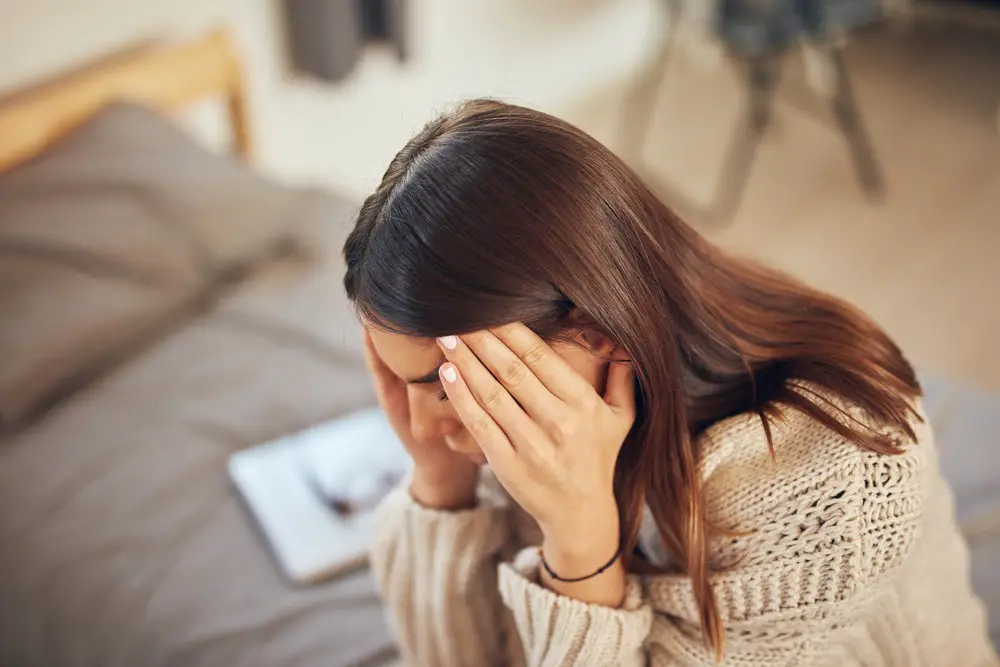As a BetterHelp affiliate, we receive compensation from BetterHelp if you purchase products or services through the links provided
Paralyzing anxiety is a severe mental health issue that affects countless individuals across the globe. It severely impacts their daily routines, work, school, and personal relationships. It is essential to understand the complexity of this condition to address and manage its symptoms effectively.
Anxiety, in general, is a typical emotional response to stress, uncertainty, or fear. However, when anxiety becomes so overwhelming that it impedes one’s ability to function, it is called paralyzing anxiety. Recognizing the symptoms and identifying triggers are crucial steps in tackling this mental health challenge and seeking the appropriate treatment.
Key Takeaways
- Paralyzing anxiety is a debilitating condition with significant impacts on daily life.
- Recognizing symptoms and identifying triggers are crucial steps in addressing anxiety.
- Therapy, medication, and self-help strategies are essential to a personalized treatment plan.
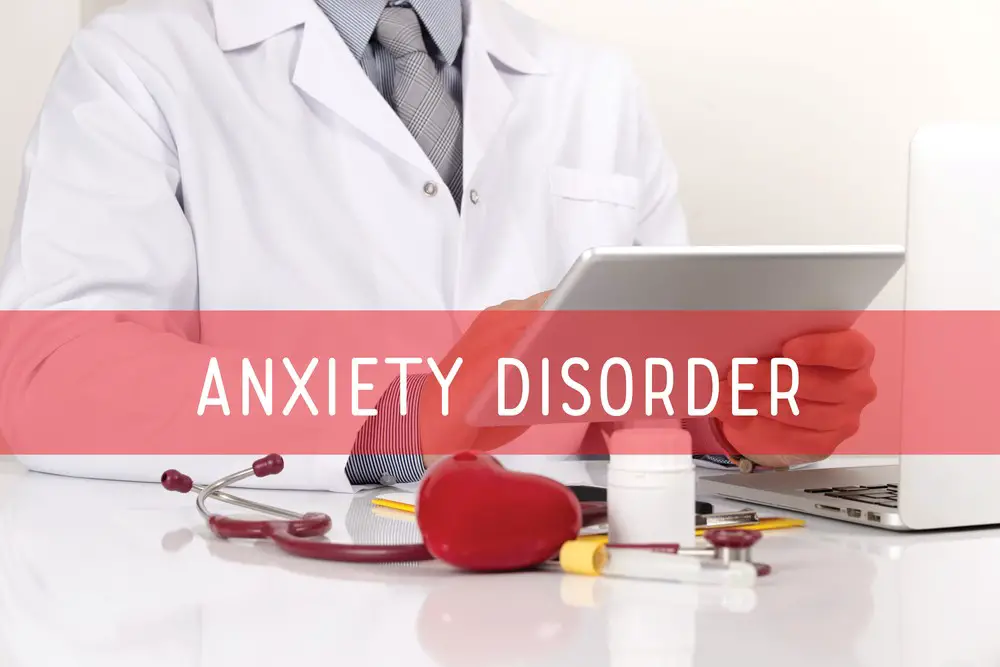
Understanding Anxiety
Anxiety is a natural and sometimes necessary emotion experienced by many individuals. It responds to potential threats, stressors, or challenges and ensures safety. However, when anxiety becomes persistent, intense, and excessively interferes with daily life, it may develop into an anxiety disorder.
Anxiety disorders can manifest in various ways, affecting mental health and overall well-being. Common symptoms include excessive fear, constant worries, restlessness, and difficulty concentrating. These disorders are rooted in the brain, where imbalanced neurotransmitters, particularly serotonin, and dopamine, can impact mood regulation.
The field of psychiatry recognizes several types of anxiety disorders, including generalized anxiety disorder (GAD), panic disorder, and social anxiety disorder. Each has its unique characteristics and can cause significant distress to those affected. Treatment approaches often involve a combination of psychotherapy, medication, and lifestyle changes to help manage fears and promote healthier thought patterns.
In conclusion, anxiety is a natural human emotion that becomes concerning when it evolves into a chronic mental health condition. By understanding anxiety’s impact on the brain and addressing it with appropriate psychiatric interventions, those affected can find relief and regain control over their lives.
Paralyzing Anxiety
Paralyzing anxiety is a mental health disorder characterized by severe anxiety levels that interfere with a person’s daily life. Those suffering from this debilitating condition may experience paralysis in decision-making, social interactions, and other everyday tasks.
This severe level of anxiety can manifest through various anxiety symptoms. It is essential to recognize that paralyzing anxiety is not synonymous with the temporary stress or worry most people experience. It is a persistent and overwhelming mental health condition that can significantly affect an individual’s well-being.
Common symptoms associated with paralyzing anxiety include:
- Excessive and constant worry
- Difficulty in concentrating
- Irritability
- Sleep disturbances
- Muscle tension
- Fatigue
Individuals facing paralyzing anxiety may also encounter physiological reactions, such as increased heart rate, shortness of breath, and gastrointestinal issues. These physical manifestations can exacerbate anxiety, making managing it even more challenging.
There are multiple approaches to address paralyzing anxiety. These may include:
- Psychotherapy, specifically cognitive-behavioral therapy (CBT)
- Medications like selective serotonin reuptake inhibitors (SSRIs) or benzodiazepines
- Relaxation techniques, such as deep breathing and progressive muscle relaxation
- Lifestyle changes, including exercise, sleep hygiene, and a balanced diet
It is crucial for those suffering from this mental health disorder to seek professional help. Early intervention and appropriate treatment can significantly improve an individual’s quality of life and reduce the debilitating effects of paralyzing anxiety. With proper support and guidance, it is possible to regain control over anxiety and lead a fulfilling, productive life.
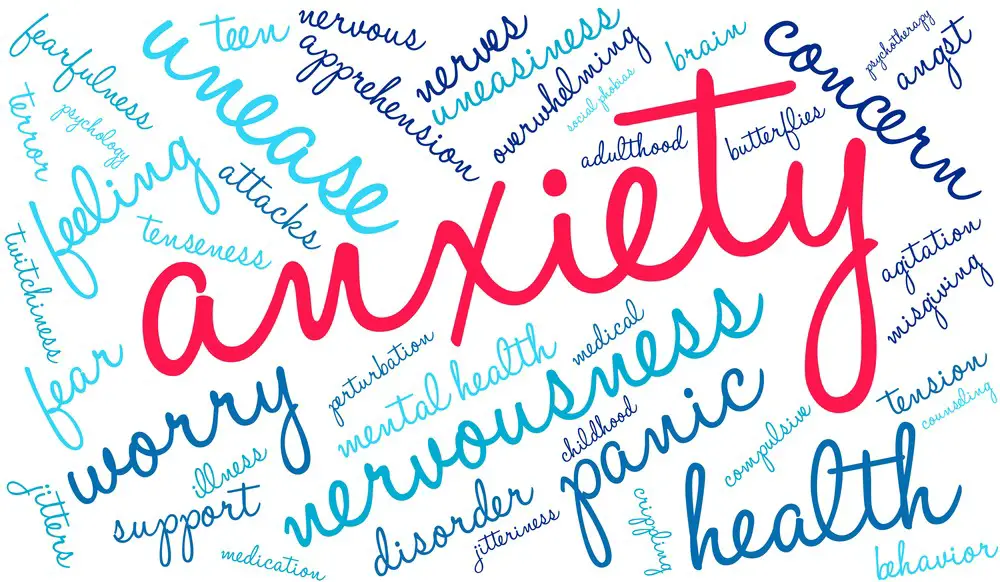
Recognizing Symptoms
Paralyzing anxiety often manifests through various symptoms that can affect individuals physically and mentally. Recognizing these signs is crucial in identifying and addressing this anxiety disorder.
Physical symptoms typically include rapid heart rate, shortness of breath, trembling or shaking, and feelings of nausea or dizziness. These sensations can become overwhelming, making the individual feel as if they are losing control or even experiencing a heart attack. Moreover, excessive sweating and muscle tension are common.
One of the most common manifestations of anxiety is difficulty concentrating. This can be observed as a constant state of mental fog, forgetfulness, or racing thoughts, making it challenging to focus on essential tasks or make decisions.
Sleep disturbances are another common symptom of paralyzing anxiety. Difficulty falling asleep, waking up frequently during the night, or experiencing nightmares can exacerbate anxiety and contribute to a cycle of exhaustion and increased stress.
Intrusive thoughts may plague individuals, causing them to worry excessively about various aspects of their lives, even when there is no immediate threat or cause for concern. These thoughts can be persistent and play a significant role in developing anxiety disorders.
Recognizing the symptoms of paralyzing anxiety is vital in identifying the issue and seeking appropriate treatment. Physical symptoms, difficulty concentrating, sleep disturbances, and intrusive thoughts are all common experiences that may indicate the presence of anxiety. Awareness of these signs can empower individuals to seek help and support to manage and overcome their anxiety.
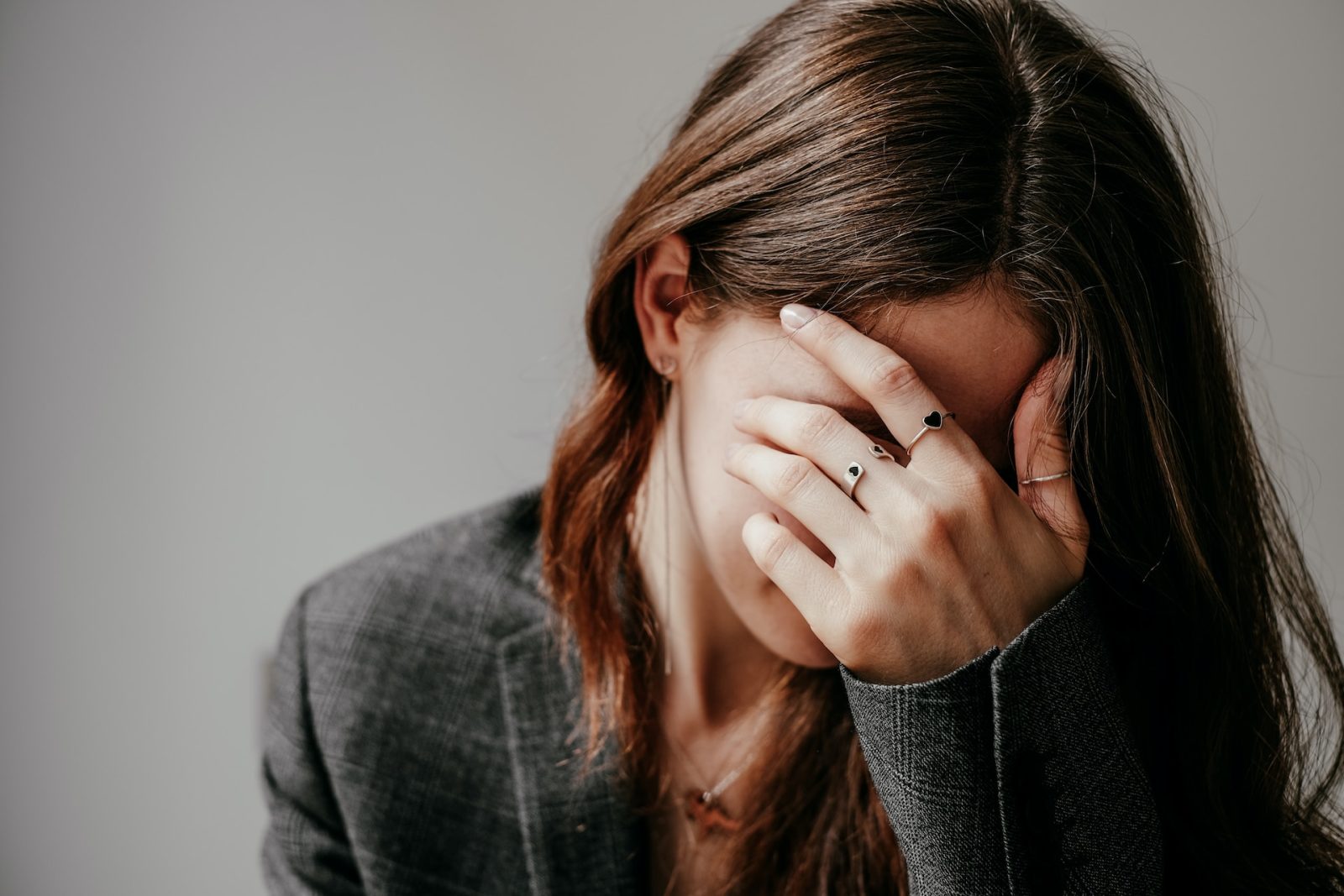
Identifying Triggers
Paralyzing anxiety can result from various triggers in a person’s life. Identifying these triggers can help individuals better understand and manage their anxiety. Triggers can range from traumatic events to more common daily experiences.
One common trigger is a traumatic event in a person’s past. These events can leave lasting impressions on individuals, causing them to feel anxious whenever they are reminded of or encounter similar situations. For example, someone who has experienced a natural disaster may develop anxiety around storms or weather patterns that remind them of their traumatic experience.
Agoraphobia, or fear of public spaces, can also be a significant source of paralyzing anxiety. For some, this fear may center around being in crowded places or trapped in a situation without an easy escape route. In these cases, individuals may experience extreme anxiety when faced with situations such as using public transportation or attending large events.
Public speaking is another common trigger that can cause anxiety. Even those who don’t typically suffer from anxiety might find public speaking to be a daunting task. In contrast, those with paralyzing anxiety may have an even more challenging time with the prospect of speaking in front of a group of individuals.
Social interactions are often a source of anxiety for many people. For some, this can be due to fears of rejection or judgment from others. This anxiety may be exacerbated in certain situations, such as networking events, parties, or one-on-one conversations.
Social media has become another potential trigger for paralyzing anxiety in today’s digital age. Exposure to the curated lives of others can lead to feelings of inadequacy and increased anxiety. The pressure to maintain an online presence and engage with others can also contribute to heightened anxiety levels.
The news can trigger some individuals, as constant exposure to negative events and uncertainty can increase anxiety and stress. This has been especially true during the COVID-19 pandemic, where ongoing updates and information regarding the virus may contribute to feelings of anxiety and helplessness.
In conclusion, individuals who experience paralyzing anxiety must identify their triggers and work on understanding the root causes of their anxiety. Acknowledging these triggers, they can develop coping mechanisms and strategies to help manage and reduce their anxiety levels.
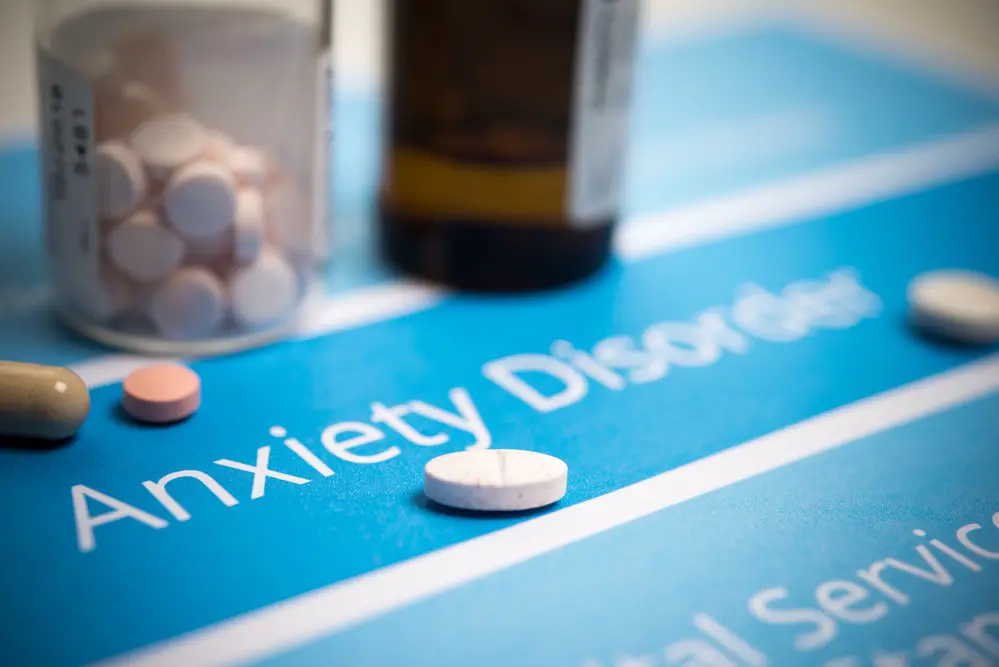
The Role of Therapy and Medication
When it comes to managing paralyzing anxiety, therapy, and medication often play crucial roles in treatment. Seeking the help of a mental health professional, such as a therapist or psychiatrist, can significantly assist individuals in addressing the underlying causes of their anxiety and developing effective coping strategies.
One common form of therapy for anxiety is cognitive-behavioral therapy (CBT), which focuses on identifying and changing negative thought patterns and behaviors. Through CBT, individuals can learn new techniques for managing their anxiety that can help reduce its intensity and frequency.
In addition to therapy, medications may also be prescribed to help manage the symptoms of paralyzing anxiety. Several drugs are commonly used to treat anxiety, including benzodiazepines and antidepressants. Benzodiazepines, such as diazepam, can temporarily relieve severe anxiety by promoting relaxation and reducing muscle tension. However, they are generally not recommended for long-term use due to potential side effects and the risk of dependence.
Antidepressants, on the other hand, are often prescribed for long-term anxiety management. Selective serotonin reuptake inhibitors (SSRIs) and serotonin-norepinephrine reuptake inhibitors (SNRIs) are two antidepressants frequently used to treat anxiety disorders. These medications work by increasing the levels of certain neurotransmitters in the brain, which can help improve mood and reduce anxiety symptoms.
Individuals must work closely with their mental health professionals to determine the most appropriate treatment plan for their needs. This may involve a combination of therapy and medication or adjustments to the type and dosage of medication prescribed. The Psychology Today Therapy Directory can be a helpful resource for finding qualified therapists and psychiatrists in one’s local area.
In conclusion, therapy and medication are valuable tools in treating paralyzing anxiety. Working with a mental health professional, individuals can develop a personalized plan to address their symptoms and improve their overall quality of life.

Self-Help Strategies
Paralyzing anxiety can be managed through various self-help strategies. One effective approach is implementing control mechanisms in daily life. This can include organizing a routine and setting boundaries to minimize stressors. By regaining control over their environment, individuals can feel more confident and less anxious.
Mindfulness practices, such as meditation and deep breathing exercises, can also help manage paralyzing anxiety. These techniques allow individuals to become aware of their thoughts and feelings without being overwhelmed. By practicing mindfulness consistently, they can develop the ability to observe their anxiety without succumbing to it.
Self-help also involves adopting various coping strategies. For instance, journaling can be a beneficial way to vent frustrations and emotions and reflect on thoughts. This practice allows individuals to articulate their feelings, providing relief and validation. Regular physical activity and a healthy diet can improve overall well-being and reduce stress.
Acknowledging anxiety is crucial in the process of self-help. To address it effectively, individuals must recognize the signs and symptoms of paralyzing anxiety. Understanding their feelings and accepting their anxiety pave the way for actionable steps in coping and overcoming it.
By incorporating these self-help strategies, individuals can manage their paralyzing anxiety and improve their overall emotional well-being. By taking control, practicing mindfulness, employing coping strategies, and acknowledging anxiety, individuals can regain their sense of empowerment and enjoy a more fulfilling life.
Mental and Physical Exercises
Regular exercise can help reduce anxiety by releasing endorphins and improving overall well-being. Incorporating physical activities like walking, jogging, or swimming into your daily routine can improve mood and anxiety. Establishing a consistent exercise regimen will further enhance the benefits.
Meditation is another effective practice in managing paralyzing anxiety. Through mindfulness and focused attention, meditation can help individuals gain control over their thoughts and emotions. Setting aside time each day for meditation can increase relaxation and reduce anxiety symptoms.
Yoga combines physical movement with mindfulness, making it a valuable tool in combating anxiety. Various yoga poses and flows can help improve flexibility, strength, and balance while calming the nervous system. Incorporating regular yoga practice into your lifestyle can decrease anxiety symptoms over time.
Diaphragmatic breathing is a technique that involves slow, deep breaths to activate the diaphragm, producing a calming effect on the body. This method can alleviate anxiety by regulating the body’s stress response and promoting relaxation. Practicing diaphragmatic breathing during heightened anxiety can help you regain control over your emotions.
Making a few simple lifestyle changes can also contribute to reducing anxiety levels. Some examples include:
- Limiting caffeine intake
- Prioritizing sleep and maintaining a regular sleep schedule
- Eating a balanced diet
- Engaging in relaxing activities, such as reading or taking a bath
Incorporating these mental and physical exercises into your daily routine can benefit those experiencing paralyzing anxiety. Developing a consistent practice of exercise, meditation, yoga, and diaphragmatic breathing can lead to an overall improvement in emotional well-being. Additionally, adopting healthy lifestyle changes can further support anxiety reduction efforts.
Diet and Nutrition Influence
Maintaining a well-balanced diet plays a significant role in managing paralyzing anxiety. Proper nutrition ensures the body and mind function at their best, ultimately aiding in reducing anxiety symptoms.
Foods rich in complex carbohydrates, such as whole grains, vegetables, and fruits, have decreased cortisol levels. Cortisol, commonly known as the stress hormone, can exacerbate anxiety when produced in excess. By incorporating these foods into one’s daily diet, individuals may experience decreased anxiety.
Furthermore, deficiencies in essential vitamins and minerals can contribute to increased anxiety. Ensuring adequate nutrients such as vitamin B6, magnesium, and omega-3 fatty acids may help alleviate anxiety symptoms. These nutrients can be found in green leafy vegetables, nuts, seeds, and fatty fish.
Evolutionarily, humans have developed adaptations to cope with stress and anxiety. A diet supporting these adaptations may help regulate the body’s stress response. By following a balanced diet, individuals can provide their bodies with the tools to manage anxiety healthily.
Remember, it is essential to consult with a healthcare professional before making significant changes to one’s diet or lifestyle to ensure it’s beneficial and appropriate for the individual’s unique needs.
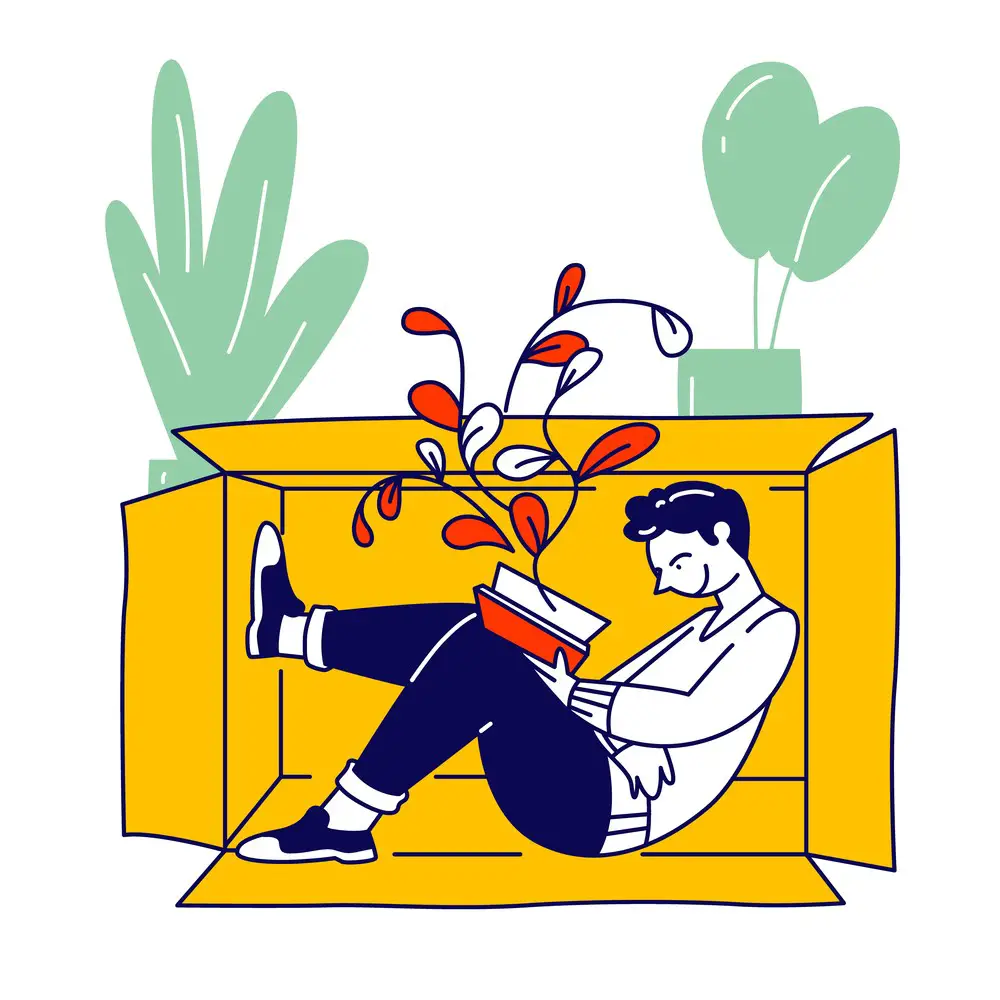
The Impact of Paralyzing Anxiety on Work and Education
Paralyzing anxiety can have significant consequences on both work and education for adults. This anxiety often manifests when individuals face uncertainties, leading to constant fear and unease. In the workplace, paralyzing anxiety can affect job performance, interpersonal relationships, and long-term career prospects.
Employees experiencing paralyzing anxiety may struggle to meet deadlines, fail to follow instructions or withdraw from team projects. This can result in decreased productivity, conflicts with colleagues, and jeopardizing their employment status. In addition, this heightened state of anxiety can lead to further stress-related health issues, such as headaches, insomnia, and digestive problems.
Similarly, the impact of paralyzing anxiety on education can be significant, particularly for adults returning to school or navigating the challenges of higher education. Test anxiety, difficulties with concentration, and persistent self-doubt can hinder academic performance, lowering overall grades and potentially even derailing educational goals.
Paralyzing anxiety may make participating in class activities or collaborating with peers on coursework difficult for students. This can limit growth opportunities, both personally and academically. Furthermore, the pressure to succeed in school and obtain a rewarding job adds even more stress to individuals already experiencing anxiety, creating a vicious cycle that can be difficult to break.
Various coping strategies and resources are available to help adults manage paralyzing anxiety in work and educational settings. Seeking professional help, adopting stress-management techniques, and practicing self-compassion can all play a crucial role in overcoming these challenges and ultimately achieving personal and professional goals.
Anxiety in Light of Public Health Concerns
Anxiety has become prevalent in our society, affecting a significant portion of the population. Examining anxiety from public health concerns perspective is crucial, especially as it is linked to health conditions, stress levels, avoidance, and data from organizations such as the Centers for Disease Control and Prevention (CDC).
Certain health conditions can increase a person’s likelihood of experiencing anxiety. Chronic illnesses, hormonal imbalances, and even certain medications can lead to heightened feelings of unease and fear. In addition, the negative impact of anxiety on a person’s physical well-being should not be underestimated. When an individual experiences constant stress and worry, it can impede their immune system, making them more susceptible to infections.
Stress levels are inherently connected to anxiety, affecting individual and public health. Incessant worrying and constant fear have been shown to cause high blood pressure, insomnia, and digestive problems. Moreover, when stress becomes chronic, it places additional strain on the healthcare system due to the increased demand for treatments related to the consequences of anxiety.
Avoidance is a common coping strategy employed by those suffering from anxiety. However, it can have harmful effects on the individual and public health. For example, those with anxiety may avoid healthcare providers or screenings, postpone necessary treatments, or skip routine appointments. Such choices can lead to underdiagnosed or undiagnosed conditions, rendering them less treatable or life-threatening. Consequently, public health institutions and healthcare providers must know anxiety’s role in avoidance behaviors.
The Centers for Disease Control and Prevention (CDC) plays a crucial part in addressing the public health implications of anxiety. Through research, they strive to comprehend anxiety’s prevalence, causes, and impacts on the general population. Additionally, the CDC provides guidelines and resources to help manage anxiety for individuals and communities, aiming to reduce the negative consequences on physical and mental health.
Understanding anxiety as a public health issue is essential for creating and implementing effective interventions. Public health professionals can develop strategies to manage its impact on society and promote better well-being by recognizing its connection to health conditions, stress levels, and avoidance behaviors.
Creating a Personalized Treatment Plan
Developing a personalized treatment plan is a crucial step in overcoming paralyzing anxiety. Individuals may work with a licensed therapist to create a tailored plan addressing their unique symptoms and needs. This process typically includes identifying triggers, setting realistic goals, and incorporating appropriate coping strategies.
The first step of creating a personalized treatment plan involves evaluating the severity and nature of the individual’s anxiety. A licensed therapist may use diagnostic tools such as questionnaires or interviews to understand the person’s anxiety patterns comprehensively. Once the therapist has gathered sufficient information, they can collaborate with the patient to develop an appropriate treatment plan.
In many cases, a successful treatment plan combines various therapeutic approaches. These may include cognitive behavioral therapy (CBT), exposure therapy, and relaxation techniques. Implementing these methods can help individuals gradually face their fears, alter unhelpful thought patterns, and learn strategies to manage stress effectively. Each person’s plan may differ, as it is tailored to their specific symptoms and progress.
Individuals are encouraged to communicate with their licensed therapist throughout the treatment process regularly. This ongoing dialogue allows for adjustments to the plan as needed, ensuring that the individual continues progressing and is on track to achieving their goals. Many individuals can recover from paralyzing anxiety with time, dedication, and professional support.
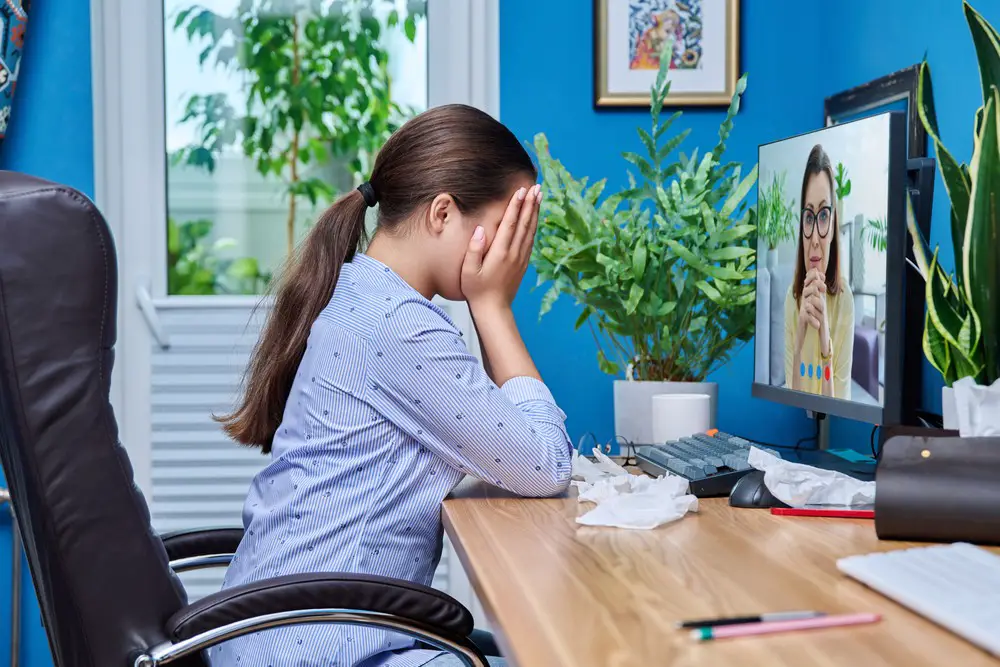
Closing Remarks on the Fight Against Anxiety
Paralyzing anxiety can have a significant impact on an individual’s daily life. Addressing this issue and not letting it dictate one’s choices and actions is essential. There are several ways to combat anxiety, and individuals must find the best method. In many cases, a combination of strategies may be most effective.
One crucial step is understanding the triggers and recognizing the warning signs of anxiety. By doing this, individuals can begin to anticipate and mitigate the effects of anxiety. Breathing techniques, mindfulness practices, and other relaxation exercises can help bring calmness and control back into one’s life.
Support from loved ones and professionals can also make a significant difference in managing anxiety. Friends, family, and therapists can provide a network of assistance and understanding, allowing individuals to feel supported in their fight against anxiety. Moreover, they can offer valuable insights and suggestions for coping mechanisms, enhancing one’s ability to handle anxiety.
In conclusion, it is essential to remember that the fight against anxiety is not a sprint but a marathon. Finding the right combination of strategies and support systems that work for an individual may take time, effort, and patience. However, with determination and perseverance, one can reduce the impact of anxiety and lead a more fulfilling life.
Frequently Asked Questions
What causes anxiety to be so severe?
Severe anxiety can be caused by various factors such as genetics, brain chemistry, personality, and life experiences. Stressful events, trauma, or a family history of anxiety could increase a person’s susceptibility to developing severe anxiety.
How can I overcome anxiety at work?
Try implementing relaxation techniques like deep breathing exercises or meditation to overcome anxiety at work. Break tasks into smaller, manageable steps and prioritize them. Communicate openly with coworkers and supervisors, seek support from friends or family, and consider consulting with a mental health professional.
What are the physical symptoms of extreme anxiety?
Physical symptoms of extreme anxiety may include rapid heartbeat, shortness of breath, sweating, trembling, dizziness, chest pain, gastrointestinal issues, and insomnia. These symptoms can be intense and overwhelming, adding to the overall anxiety experience.
What is emotional paralysis?
Emotional paralysis refers to the inability to think, feel, or take action due to overwhelming anxiety, fear, or stress. It might manifest as feeling stuck, numb, or frozen, making decision-making and coping with everyday situations challenging.
How to deal with stress-induced immobility?
Strategies for dealing with stress-induced immobility include grounding techniques such as deep breathing, progressive muscle relaxation, and mindfulness exercises. Speaking with a mental health professional can help identify stressors and develop coping mechanisms.
Can generalized anxiety lead to temporary paralysis?
While generalized anxiety disorder typically does not cause temporary paralysis, extreme anxiety or panic attacks may result in feelings of emotional paralysis. This can include symptoms like feeling frozen, numb, or unable to function. If these symptoms persist or interfere with daily functioning, seeking professional support is advised.
- 7 Ideas to Help You Relax and Unwind on a Family Vacation - April 27, 2025
- How Having Cybersecurity Protection Helps You Relax - April 25, 2025
- 8 Reasons Why Spending Time Outside Calms You Down - April 25, 2025
This site contains affiliate links to products. We will receive a commission for purchases made through these links.

